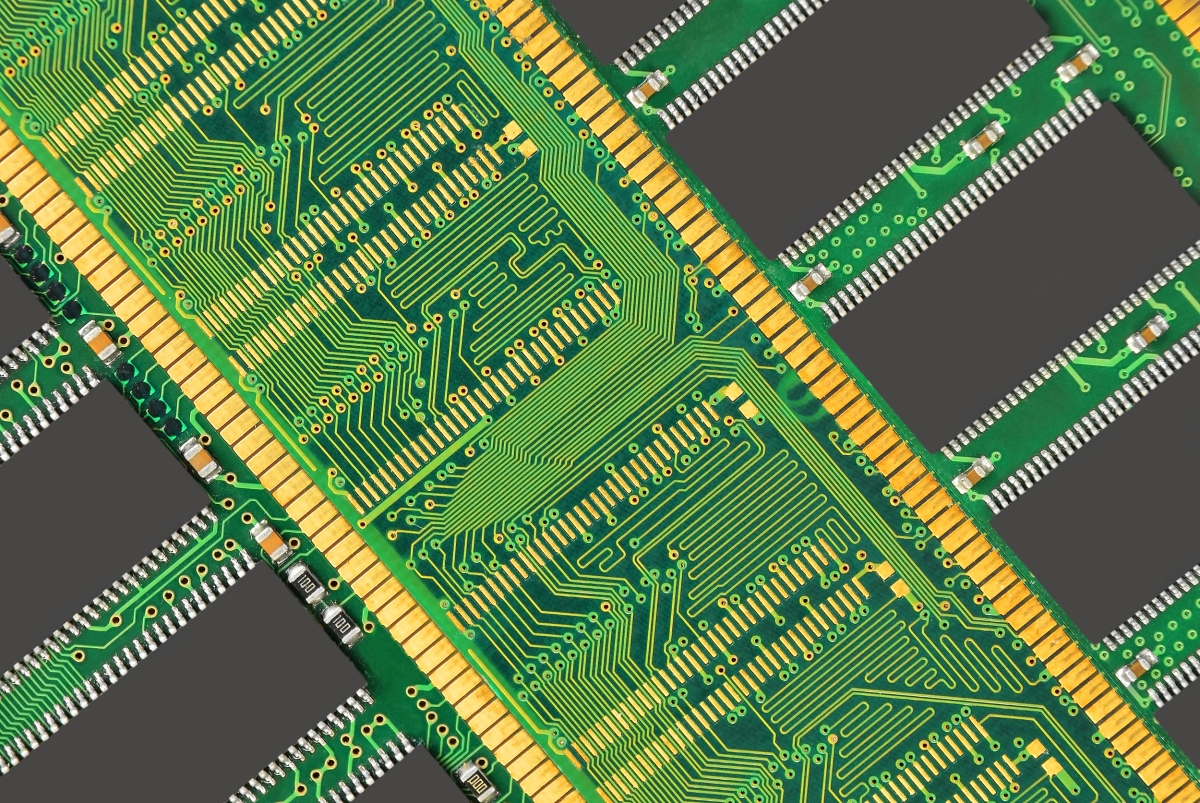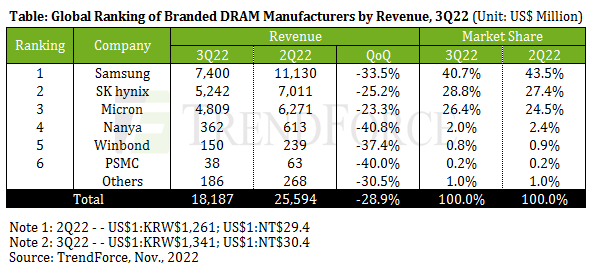The big picture: This year's declining demand for tech products continues to affect memory and other computer components. The latest quarter saw prices fall yet again alongside an unprecedented revenue drop. Analysts aren't sure when conditions will change, but manufacturers are cutting production and delaying transition plans in response.

According to TrendForce analysts, global DRAM revenue fell by 28.9 percent in the third quarter of this year compared to the previous quarter. The decline is the biggest since the 2008 financial crisis.
Furthermore, Q3 DRAM contract prices dropped by between 10 and 15 percent compared to Q2. That fall roughly aligns with the predictions from TrendForce's Q2 report from July, when prices fell 10.6 percent year-over-year. Server DRAM shipments also declined in Q3.
Among the three largest DRAM vendors, Samsung saw the biggest revenue drop – down 33.5 percent. However, the company's overall market share grew from 40 to 43 percent. SK Hynix and Micron each saw revenue decrease by around a quarter. Micron's decline was the smallest among the big three because it reports its numbers differently.
Out of the top six DRAM companies, Nanya took the biggest revenue hit at 40.8 percent due to its greater reliance on DRAM and mainland China customers. PSMC suffered almost as severely, seeing 40 percent less revenue in Q3 from its in-house branded DRAM products. Finally, Winbond's falling shipments caused a 37.4 percent revenue contraction.
The situation has caused suppliers to slow down their plans for expansion and transition to new technologies. Falling demand for camera modules caused Samsung to restrain its move from DRAM to CMOS image sensors. Micron delayed mass production of its 1-beta node process. Winbond lowered production at its Taichung fab this quarter and delayed mass production at its new Kaohsiung fab.
The market downturn has caused RAM and SSD prices to slide throughout 2022. However, production cuts mean those prices could bottom out late this year, so users looking to capitalize on cheap memory and storage might want to do so soon.
In addition to SSDs and RAM, falling demand has also impacted TVs, smartphones, Chromebooks, graphics cards, and other devices. Companies including Nvidia, Intel, Meta, and Amazon have felt the pain, though Apple's most recent quarter held firm due to strong Mac sales.
In previous reports, analysts couldn't say how long it would take into next year for tech markets to start recovering. Now, TrendForce thinks DRAM vendors will have challenges adjusting inventory through the first half of 2023.
https://www.techspot.com/news/96682-global-dram-revenue-falls-nearly-30-biggest-drop.html
